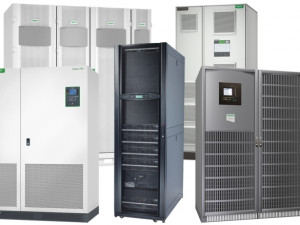Johannesburg, 20 Jun 2017

Often lost in the noise of the debate is that all N+1 systems are not alike. This is important, because the right N+1 configuration can make a big difference in capital costs and deployment time.
To the uninitiated, N+1 is one of several approaches around planning and developing redundancy of utilities, in this case, for IT systems such as data centres. It can be applied to several utilities, such as cooling, but in this article, it will be discussed as a power supply metric.
N is the total amount of power required to run a given technology system. N+1 indicates a UPS (uninterruptable power supply) configuration where backup power requirements are met through a set of modular systems working together, resulting in backup power of N - the entire system requirement - and +1 - an additional module that steps in if part of N fails. The more traditional 2N is a system where backup availability is double that of the power requirement.
The purpose of this article is to consider the merit of certain N+1 UPS configurations, but it is worth taking a moment to explain why 2N is not as appetising as before. In recent years, the technologies within and around data centres have become significantly more intelligent and much quicker to adapt to power disruptions.
Though a wholesale failure of power is possible, it is more common for parts of the data centre to lose power. In such cases, firing up the 2N stack is counterproductive, since you are cracking a nut with a sledgehammer. Those systems aren't inert: even if you never use the full 2N supply, you still have to maintain and eventually replace it.
The modular approach that delivers N+1 systems is cost-effective without risking redundancy shortcomings. One is not superior to the other, though, and it must be carefully considered which is the better fit. But, in modern data centre environments, N+1 UPS has arrived as a very effective solution to meet power redundancy demands.
A common N+1 approach is to place different UPS systems into parallel configurations. But research conducted by Schneider Electric and its partners has found that a single UPS frame housing multiple modules is both far more cost-effective than parallel N+1 systems and also much quicker to deploy. Specifically, the single frame UPS approach can realise 27% in capital cost savings and a one to two week decrease in deployment time.
The findings are detailed in the whitepaper: "Cost, Speed, and Reliability Tradeoffs between N+1 UPS Configurations", which concluded:
"Internal 'modular' redundancy provides significant gains in risk avoidance for a small cost premium and relatively no impact on efficiency and timeline. Parallel redundant UPSes offer even greater risk avoidance, but comes at a steeper cost and deployment time premium. In the end, it is the role of the decision-maker to weigh these trade-offs to select the design with the right level for their business needs."
It would be a mistake to assume that physically separated boxes are the best way to create power redundancy in a data centre. Download the whitepaper today and see for yourself that a single frame UPS system with modules can not only be better, but ultimately, costs less and is easier to maintain as well.
Download the full whitepaper here: http://www.schneider-electric.co.za/en/download/document/APC_VAVR-A84MRT_EN/
Share